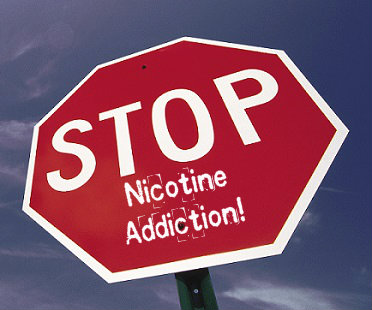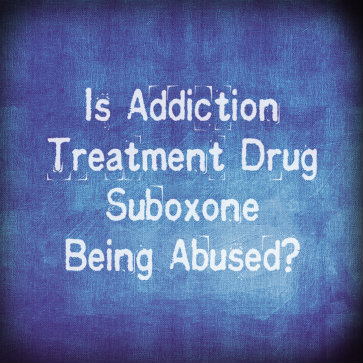Most people recovering from an addiction to an opioid drug or medication will experience a relapse fairly early in the treatment process. Two key factors in the onset of a relapse are the presence of continuing cravings or urges for opioid use and the onset of withdrawal symptoms after initial opioid detoxification.
In a study slated for publication in February 2015 in the journal Addictive Behaviors, a team of American researchers looked at the ways in which cravings and withdrawal symptoms impact the relapse risks for any given person recovering from prescription opioid addiction.
Opioid Cravings
All people dealing with opioid drug or medication addiction have longstanding chemical changes in their brain function that make them physically dependent on the continued intake of some form of opioid substance.
 Opioid cravings are essentially unconscious and conscious signals sent by the brain as a reminder of the established need to maintain at least a minimum level of opioid intake. Conscious cravings may manifest as clearly articulated thoughts supporting immediate opioid consumption or opioid consumption in the near future.
Opioid cravings are essentially unconscious and conscious signals sent by the brain as a reminder of the established need to maintain at least a minimum level of opioid intake. Conscious cravings may manifest as clearly articulated thoughts supporting immediate opioid consumption or opioid consumption in the near future.
Conversely, unconscious cravings may manifest as unarticulated urges for opioid intake. Conscious and unconscious cravings for the use of opioids or any other substance commonly stem from exposure to drug cues.
These cues are reminders of the actions commonly undertaken during episodes of substance use, the thoughts or feelings associated with substance use or the circumstances in which substance use typically occurs.
A strong drug cue can support a rapid escalation of drug cravings, and thereby steeply boost the short-term odds of drug use. The presence of opioid cravings is a diagnosable symptom of opioid use disorder (opioid abuse/addiction).
Opioid Withdrawal
Withdrawal is a second reinforcer used by the dependent/addicted brain to ensure the continued consumption of any given substance. It occurs when the levels of that substance fall below the levels required by the currently established conditions of addiction.
Opioid Withdrawal Symptoms
Specific symptoms of opioid withdrawal include:
- sleeplessness
- achy muscles
- an unusually anxious or agitated mental state
- excessive sweat production
- nausea
- vomiting
- pupil dilation
- diarrhea
- cramping in the stomach or abdomen
Unlike some forms of withdrawal (e.g., alcohol withdrawal), opioid withdrawal has no potential to trigger fatal changes in body function. However, affected individuals commonly feel uncomfortable enough to resume opioid intake. Withdrawal symptoms are usually most prominent during initial opioid detoxification. Along with opioid cravings and a range of other symptoms, doctors use the presence of withdrawal symptoms to help diagnose the presence of opioid use disorder.
Impact On Opioid Relapse Rates statistics
In the study scheduled for publication in Addictive Behaviors, researchers from the University of Texas Medical School at Houston, the University of Texas Health Science Center, the University of Texas Southwestern Medical Center and Harvard-affiliated McLean Hospital used information from a project called the Prescription Opioid Addiction Treatment Study to help determine exactly how opioid cravings and opioid withdrawal work together to increase the odds that any given person in recovery will relapse back into uncontrolled opioid use.
A total of 653 people dependent on or addicted to opioid medications took part in the study. All of these people received a commonly used medication, called buprenorphine/naloxone, that’s specifically designed to reduce the risks for relapse in people affected by opioid addiction.
The researchers concluded that there were four distinct groups of people in the larger pool of study participants: people with high levels of opioid craving and opioid withdrawal, people with moderate or intermediate levels of opioid craving and opioid withdrawal, people who transitioned from high levels of craving and withdrawal to low levels of craving and withdrawal, and people who maintained low levels of craving and withdrawal.
The researchers also concluded that three groups of participants were least likely to relapse back into uncontrolled opioid use: people who experienced a reduction in their craving and withdrawal levels over time, people who initially experienced low levels of craving and withdrawal, and people who responded well to the craving- and withdrawal-reducing effects of buprenorphine/naloxone.
The study’s authors believe that their work increases the level of understanding about those individuals most likely to rapidly relapse after entering treatment for prescription opioid dependence/addiction. They also believe that their work underscores the importance of paying close attention to changing craving and withdrawal symptoms during the recovery process.
Finally, the authors believe their work may increase the future ability to identify individualized treatment patterns that decrease each affected person’s chances of experiencing an early opioid relapse.
According to the Centers for Disease Control and Prevention, tobacco use is the leading preventable cause of death in the United States. This is why helping people quit smoking is such a priority. Unfortunately, most smokers find it very hard to give up the habit. The Smoking Treatment for Ontario Patients (STOP) program—funded by the Ontario Ministry of Health and Long-Term Care—is one approach that manages to increase quit-rates by providing nicotine patches and psychological treatment to smokers, and could serve as an example for U.S.-based organizations. The initiative started in 2005 and now runs numerous times per year, offering smokers the opportunity to break free of their addictions and get healthy.
Why Is It So Hard To Quit Smoking?
 Although tobacco is a widespread and legal substance, quitting it is hard for many of the same reasons that it’s difficult to stop using illegal drugs. Nicotine—the addictive component of cigarettes—releases dopamine in the brain, the neurochemical responsible for the majority of addictions. When the body gets accustomed to it, the external “boost” that smoking provides stops, and this leads to an imbalance in brain chemicals followed by unpleasant symptoms. The problem is compounded by the fact that research indicates “cold turkey” (unsupported) quitting is the most popular method, but is a considerably less successful strategy than counseling, medications and nicotine replacement therapy (like gums or patches). In short, smokers—with an already difficult task ahead of them—often try to quit by themselves, which is statistically the least successful method.
Although tobacco is a widespread and legal substance, quitting it is hard for many of the same reasons that it’s difficult to stop using illegal drugs. Nicotine—the addictive component of cigarettes—releases dopamine in the brain, the neurochemical responsible for the majority of addictions. When the body gets accustomed to it, the external “boost” that smoking provides stops, and this leads to an imbalance in brain chemicals followed by unpleasant symptoms. The problem is compounded by the fact that research indicates “cold turkey” (unsupported) quitting is the most popular method, but is a considerably less successful strategy than counseling, medications and nicotine replacement therapy (like gums or patches). In short, smokers—with an already difficult task ahead of them—often try to quit by themselves, which is statistically the least successful method.
Physical Withdrawal Symptoms Of Nicotine Withdrawal
Like with other drugs, when you stop consuming nicotine you may feel a wide range of physical symptoms. The most common smoking withdrawal symptoms are agitation, irritability, weight gain, depression and anxiety. The negative symptoms come on because the individual is no longer getting the nicotine he’s become dependent on, and the brain knows it, creating cravings in an attempt to make the individual succumb to temptation and give it another hit of nicotine.
Psychological Challenges Of Quitting Smoking
Although the physical withdrawal symptoms add to the discomfort of quitting smoking, the psychological effects are what drive many ex-smokers to relapse. Smoking, like other drug addictions, is a poor coping strategy for dealing with everyday problems, and when these problems return, the individual is at particular risk for relapse. Both internal and external “triggers” to smoke can make the process more difficult, with internal factors including things like stress and depression and external ones including things like being around a friend who smokes or taking a work break that you previously used for smoking. These things push the individual back to smoking, and in combination with the physical withdrawal symptoms, they make the process of quitting extremely challenging.
Benefits Of Initiatives Like STOP
These issues are what make initiatives like STOP so worthwhile. The core selling point of STOP is that attendees receive five weeks’ worth of free nicotine patches, which ordinarily cost around $30 per week, meaning they save around $150. This removes what some see as a financial barrier to getting the support they need, but the support also takes the psychological elements into account. Each qualifying smoker is also eligible to attend workshops and receive ongoing support to help manage triggers and cravings.
This broad range of support contributes to the impressive success rates enjoyed by the initiative. Oxford County’s tobacco control coordinator Dominique Bruce points out that those in the program have a quit rate that’s 50 percent higher than those not in the program. She also points to the cost savings and psychological support offered by the program. “If you slip up, you need to remember it’s just a slip up, not a fail,” Bruce said.
The Right Way To Help People Quit Smoking
There are many lessons that can be learned from programs like STOP, and although this initiative is in Canada, U.S.-based stop smoking initiatives can take a cue from the approach and work to reduce the preventable diseases and deaths caused by smoking. The smokers themselves face the biggest challenges, but with the right support and the guidance to help them push through the difficult periods, they have the ability to kick their tobacco addiction for good. As long as we understand the challenges inherent in quitting smoking—or kicking any addiction—we can find the compassion to help those in need and the wisdom to do so in the most effective way possible.
Addiction to opioid drugs, like heroin, is a terrible disease and one that is difficult to overcome. Even with the best treatment and addiction professionals, coming clean from opioids and staying clean is a huge challenge. The impact that these drugs have on the brain and the body is so strong that it takes a major effort to stop using them. For this reason, researchers have worked on developing medications to help addicts. One such drug is Suboxone and it can help heroin and other opioid addicts stay sober. However, as an opioid itself, this medication can also be abused.
Withdrawal Symptoms Of Opioids
One of the main reasons quitting opioid drugs is so difficult is the severity of withdrawal symptoms. Taking addictive drugs repeatedly leads to changes in the brain. An addict needs the drug simply to feel normal again. When an opioid addict goes off his drug, he will experience anxiety, agitation, insomnia, achiness, sweating and a runny nose in the early stages. As withdrawal progresses, the symptoms get worse and include cramps, diarrhea, nausea and vomiting. These symptoms are extremely uncomfortable and lead many addicts to start using again.
What Is Suboxone?
 Suboxone is a drug with active ingredients called buprenorphine and naloxone. Together these ingredients reduce the symptoms of withdrawal from opioid drugs. When an addict gets relief from the terrible symptoms of withdrawal, he is more likely to stay sober. There are a few risks associated with taking Suboxone, and potential side effects such as cold-like symptoms, sweating and headaches.
Suboxone is a drug with active ingredients called buprenorphine and naloxone. Together these ingredients reduce the symptoms of withdrawal from opioid drugs. When an addict gets relief from the terrible symptoms of withdrawal, he is more likely to stay sober. There are a few risks associated with taking Suboxone, and potential side effects such as cold-like symptoms, sweating and headaches.
Suboxone has been proven by research to be effective in helping opioid addicts stay clean. In one study, nearly half of the addicted participants using Suboxone were able to reduce their use of narcotic opioid painkillers. The success rate dropped to below 10 percent when the participants stopped using Suboxone.
How Is Suboxone Able To Be Abuse?
Although it is an opioid, just like narcotic painkillers and heroin, Suboxone’s impact on the brain is much less than the more addictive drugs. However, there is still the potential for abuse. Another opioid that has been used to treat heroin addicts for decades, methadone, has a much greater potential for abuse than Suboxone. As a result, methadone is tightly controlled. Suboxone can be prescribed in a doctor’s office and the addict can take it home. This more lax approach to dispensing Suboxone leaves the door open for abuse.
Overdose And Death From Suboxone?
Furthermore, because regulations are not as tight as with methadone, many users don’t realize that it is possible to overdose and die from taking too much Suboxone.
Recent reports in the news illustrate the problems associated with Suboxone. Although it can help addicts get clean, it is clear that some people are abusing it and using it to get high rather than to stay sober. In New York, people have been arrested recently for trying to sell Suboxone. Not only are addicts being prescribed the drug abusing it, it’s also entering the illicit marketplace and being sold to non-addicts looking for a high. Arrests have also been made in Virginia and other states.
Drugs like Suboxone are important for helping people who desperately want to stop using heroin and other opioids. However, no error-free drug has yet been developed. As long as there is any possibility of getting high on a medication, the drug will be abused by someone. Doctors need to take great care in prescribing these medications and policy makers must consider whether restrictions need to be tightened to prevent further abuse.
Read More About Buprenorphine Treatment For Opioid Addiction
Alcohol withdrawal is a condition that occurs when a long-term, heavy drinker stops using alcohol. It inevitably appears in alcoholics who decide to stop drinking and seek alcohol addiction treatment. Depending on factors that include the length of alcohol use and the intensity of alcohol use, the symptoms of withdrawal can range from relatively mild to severe or even life-threatening. Unfortunately, fear of these symptoms can play a significant role in continued drinking and the avoidance of treatment. However, in the vast majority of cases, alcohol withdrawal produces more or less predictable changes in the body, and proper monitoring and medical treatment can help a recovering drinker make it through this process.


